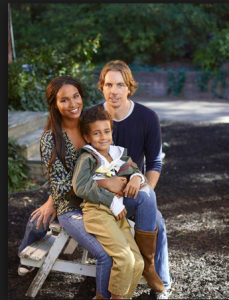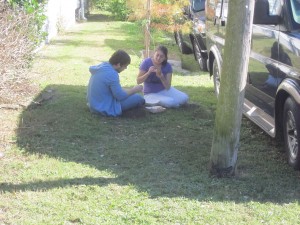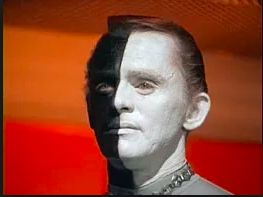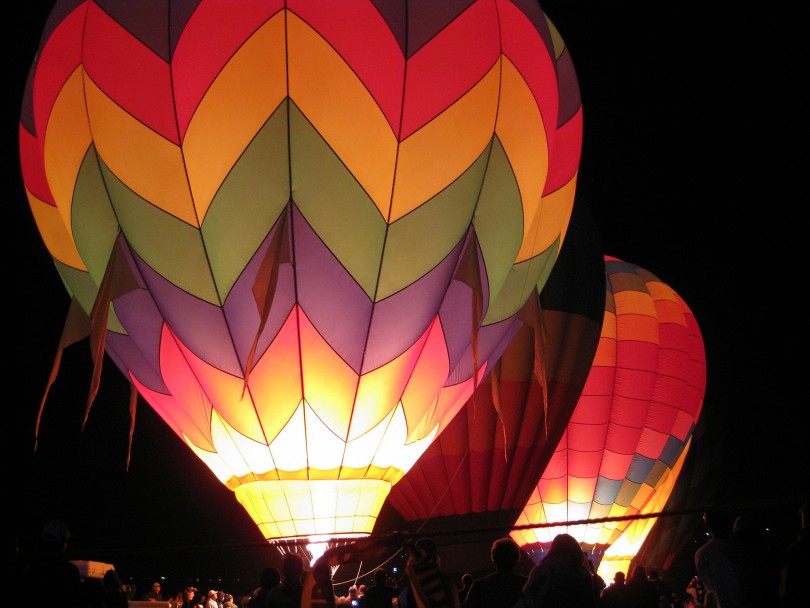aNewDomain — America would be a totally different place if we weren’t racist.
There for sure would be a lot more people of color around.
 So-called minorities now make up some 60 percent of the prison population. But if there were no longer racists, people of color would constitute just 33 percent of prisoners, a stat that’s right in line with today’s demographics.
So-called minorities now make up some 60 percent of the prison population. But if there were no longer racists, people of color would constitute just 33 percent of prisoners, a stat that’s right in line with today’s demographics.
Think about it.
There are 2.3 million people in prison today. Let go of the difference by which non-white men and women are overrepresented in prison and you get about 27 percent of all incarcerated people. That would be 627,000 people, which is about the population of Nashville. Substract them from the prison population and add them back to the mix. Suddenly we wouldn’t recognize the place.
Here’s how America would change if weren’t racist.
There’d be fewer Asians on campus.
My colleagues and my students would be different if we weren’t racist. They’d be less white and far less Asian. But there would be more blacks and more Hispanics.
 Asian Americans constitute about five percent of the American academic population I’m part of. Yet they account for 10 percent of the doctoral degrees awarded. Blacks, on the other hand, only get seven percent of the doctorates. One group is overrepresented by double, and the other remains underrepresented by the same degree.
Asian Americans constitute about five percent of the American academic population I’m part of. Yet they account for 10 percent of the doctoral degrees awarded. Blacks, on the other hand, only get seven percent of the doctorates. One group is overrepresented by double, and the other remains underrepresented by the same degree.
If the numbers reflected true demographics, schools no longer would have to photoshop in students of color nor pressure all their students of color to appear in their advertising.
A school could just photograph an average classroom and about 67 percent of the room would be white faces. The remainder of students would would form an accurate representation of what America really looks like, demographic-wise.
Other aspects of campus life would be different, too. I teach at two schools — a wealthy private graduate school and also a poorer, public community college. If we weren’t racist, people of color would be represented at regular population proportions at both campuses.
 The change wouldn’t be as evident at the poorer campus of the community college.
The change wouldn’t be as evident at the poorer campus of the community college.
That campus would become more white and a little less colorful. And the graduate school would be way more colorful.
Graduation rates would not change much if we weren’t racist, though.
Statistics show most people who drop out of college do so due to poverty and the pressure of having to work to afford both life and school.
If we weren’t racist, college drop out rates would remain about the same. And once they entered the working world, they’d find a racial mix that reflects society. Work would be a lot less white.
If we weren’t racist, fewer people with ethnic-sounding names would be out of work.
 Here in the US, unemployment for black males is about double the rate for white males.
Here in the US, unemployment for black males is about double the rate for white males.
This is due to uneven incarceration numbers to a degree. But it also has to do with plain old racism at the hiring level.
People with ethnic-sounding names get fewer callbacks for the exact same resumes. That wouldn’t happen if we were less racist.
And if there were no racists in Hollywood …
 If we were less racist, movies would look really different. If there were no racists in Hollywood or in audiences, fully 17 percent of the actors would be Latino. Fourteen percent would be black.
If we were less racist, movies would look really different. If there were no racists in Hollywood or in audiences, fully 17 percent of the actors would be Latino. Fourteen percent would be black.
And I no longer would be able to predict who would get killed and who would survive the film based on skin tone.
This obviously isn’t the case now. The recent Oscars scandal is just the tip of that big white iceberg.
If we were less racist, football and basketball would be whiter.
What about sports? Professional athletes are overwhelmingly from minority populations, if you first skip over traditionally white sports like golf and swimming. The NFL is just 27 percent white; the NBA hovers at about 25 percent white.
There is no credible evidence that black men are born to be better at football and basketball than white men.

So what is going on?
The probable answer is: opportunity. Whites are just a bit underrepresented in athletic scholarships, but that includes all sports, tennis, golf, swimming and all the unprofitable ones.
The difference is more evident in big money pro sports like football and basketball.
Even in division one football, black men make up well over 50 percent of players.
That doesn’t jive. White students on average go to better schools than do students of color. They get better grades and should be more likely to get academic scholarships. Many even have the option to go to school with or without financial aid.
 But most students of color have to get to education anyway they can.
But most students of color have to get to education anyway they can.
People of color escaping poverty do so often through entertainment careers in music, film, and sports; white people escaping poverty are more likely to do so through professional careers.
So when I turned on a ball game, I would see that the players, coaches, and fans were about 67 percent white. When I got to work, I’d see a mix of races that similarly reflected the population.
People of color would be represented equally on campus, and in sports, movies and TV. Yes, even TV.
If we weren’t racist, you wouldn’t recognize “Cops.”
In the world where we weren’t racist, I’d turn on reality shows — say, “Cops” — and I wouldn’t just see shirtless black kids getting chased down by mostly white officers.
 I remember seeing an advertisement for a criminal justice degree on a local television station: The ad featured a pair of black hands in handcuffs, a white officer and a police car.
I remember seeing an advertisement for a criminal justice degree on a local television station: The ad featured a pair of black hands in handcuffs, a white officer and a police car.
If we weren’t racist, that would be statistically anomalous and I wouldn’t have to worry whose preconceptions were being portrayed on this screen or whether they were preconceptions at all.
If we weren’t racist, then stand-your-ground laws would be equally an equally effective defense regardless of who shot who – and maybe we would shoot one another less often to begin with.
If we weren’t so racist, I perhaps wouldn’t be married to a white woman.
If we weren’t so racist, it might be that I wouldn’t be married to a white woman.
 We all tend to form romances with people to whom we are most frequently exposed. If I had met more people of color in my education and in my work, I likely would have fallen in love with someone not my own race. Which makes me wonder: Did I in fact meet such women of color but discount the possibility of ever marrying them due to my own racism?
We all tend to form romances with people to whom we are most frequently exposed. If I had met more people of color in my education and in my work, I likely would have fallen in love with someone not my own race. Which makes me wonder: Did I in fact meet such women of color but discount the possibility of ever marrying them due to my own racism?
That’s an uncomfortable thought. And luckily the data doesn’t support it. And truth is, I never had the opportunity.
I went to college in Boulder, CO. I met my wife there. And when I was at the University of Colorado, the school was 77 percent white. It since has improved its numbers to 74 percent white.
As for the city of Boulder, it’s 91 percent white. Chances are pretty good I never would’ve met my a colorful version of my match in Boulder.
Then again, same-race marriages wouldn’t be the norm if were less racist.
The demographics would preclude that.
And if we weren’t so racist, my neigborhood would be whiter.
 These days I live in what is known as a borderline neighborhood, not affluent and not quite impoverished. It would be whiter if we were less racist. As it is, white faces on our street are not that common. But there was a shooting fatality in my neighborhood two years ago. Parties often get rowdy and out of hand. And people usually offer to sell me drugs when I go down to the park.
These days I live in what is known as a borderline neighborhood, not affluent and not quite impoverished. It would be whiter if we were less racist. As it is, white faces on our street are not that common. But there was a shooting fatality in my neighborhood two years ago. Parties often get rowdy and out of hand. And people usually offer to sell me drugs when I go down to the park.
I think about trying to afford a better neighborhood so my son can play outside safely the way it was for me at his age. If we were less racist, this wouldn’t constitute the dreaded term “white flight.” But that is what it would be right now.
Really, pretty much everything would be different.
 If we were not racist, the whole country would be different.
If we were not racist, the whole country would be different.
Really different.
I would be different. My family and friends would be different.
Same goes for the neighborhood, my job, the students I know, the movies and sports I watch, America business and the whole world.
It’s funny.
So many of the decisions we make are motivated by race, consciously or otherwise, through defacto school and housing segregation, mass incarceration and media consumption. And if we were less racist, I’d feel no need whatsoever to write any of this right now.
For aNewDomain, I’m Jason Dias.
Air balloon image credit: Jon ‘ShakataGaNai’ Davis [CC BY-SA 3.0 (http://creativecommons.org/licenses/by-sa/3.0) or GFDL (http://www.gnu.org/copyleft/fdl.html)], via Wikimedia Commons
Latino college students, image credit: Wikimedia Commons
Po Boy picnic image: Wikimedia Commons
By Infrogmation of New Orleans (Photo by Infrogmation of New Orleans) [GFDL, CC BY-SA 2.0, CC BY-SA 2.5 or CC BY-SA 3.0], via Wikimedia Commons
Women at work, image: Wikimedia Commons
Man photographer in black and white: Wikimedia Commons
Image from the “Cops” TV show: cops2hot4tv YouTube channel
Mixed race family: Wikimedia Commons
Basketball players: Wikimedia Commons
Latin American business people: Wikimedia Commons
College students: Wikimedia Commons














Wow, that article was absolutely TERRIBLE! A lot of the issues you mentioned, I’d argue are purely socioeconomic. Not racist.
And most the winners featured on cops are stupid, meth head white people.